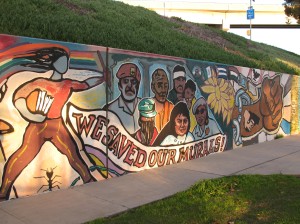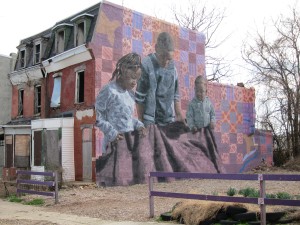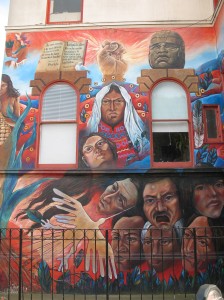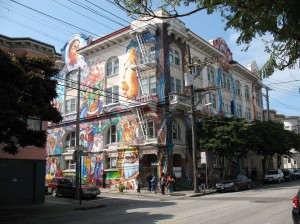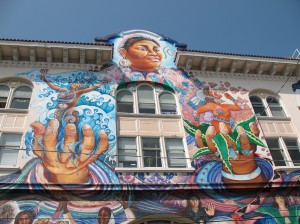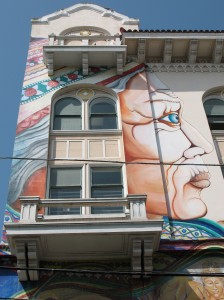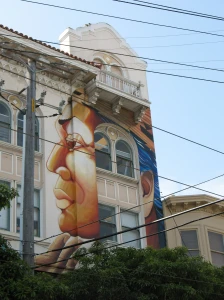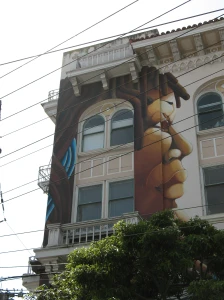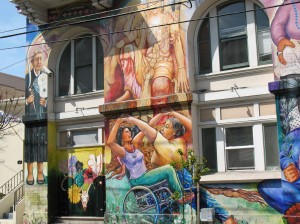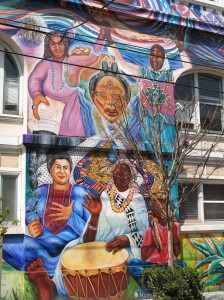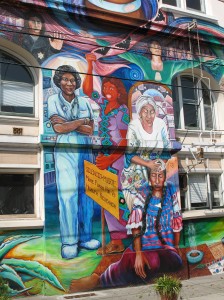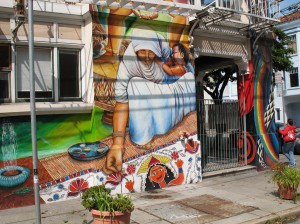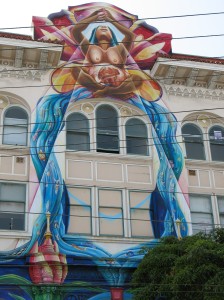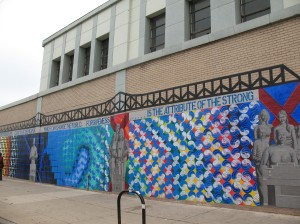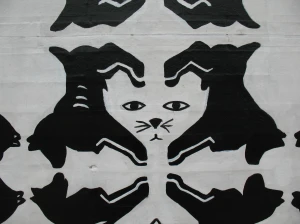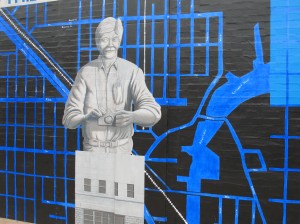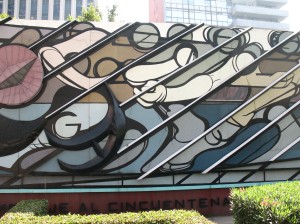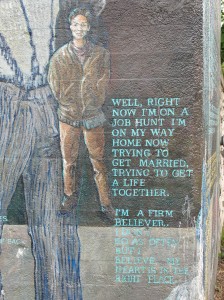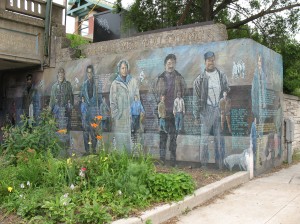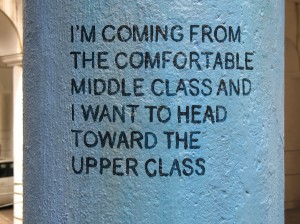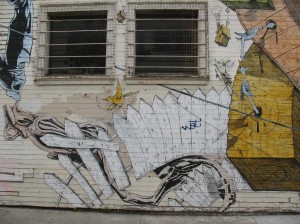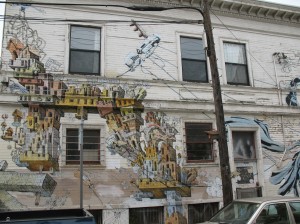My friend S, San Diego born and raised, tipped me off about the Chicano Park murals before my trip in early 2011. The park is located under the Coronado Bridge in Barrio Logan, and it is nothing less than an outdoor mural museum.


Above: La Tierra Mia (date unknown), Mario Toreo
Below: Aztec Warrior (1978), Felipe Adame
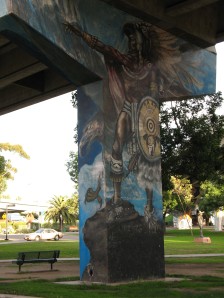
Chicano Park began with a land takeover in 1970. The surrounding neighborhood, Logan Heights, had been a vibrant Mexican-American community since the early 1900s. Rezoning in the 50s led to an influx of Anglo-owned junkyards, and construction of Interstate 5 in 1963 cut the neighborhood in half. Barrio Logan was further chopped up in 1969 when the Coronado Bridge was built. The neighborhood fell into decline as thousands of residents and businesses were displaced, and homes and yards were replaced with a forest of concrete freeway pillars.
In response, the residents demanded a park underneath the new bridge. Officials promised the park, but plans actually moved forward to build a California Highway Patrol station on the land. In April 1970, residents spotted bulldozers moving in to start work on the station and, on April 22, they occupied the park to block the work. They stayed 12 days, clearing and planting the land and organizing the Chicano Park Steering Committee. At a meeting with City and Highway Patrol representatives, Salvador Robert “Queso” Torres articulated a vision for the park: “Chicano artists and sculptors will turn the great columns of the bridge approach into things of beauty reflecting the Mexican-American culture.”
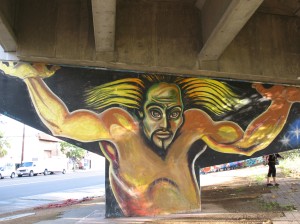
Above: Colossus (1974, restored 1989), Mario Terero, Mano Lima and Laurie Manzano
Below: Varrio Sí, Yonkes No (1977, restored 1989), Raul Jose Jacquez, Alvaro Millan, Victor Ochoa, and Armando Rodriguez — reflects the protest call: Neighborhood Yes, Junkyards No

On July 1, 1970 the land was officially allocated for the park. Torres visited the Polyforum Siquieros in Mexico City in 1971 and found similarities and inspiration in the 12-sided concrete structure. Mural painting in Chicano Park began in 1973 with most of the major mural activity completed by 1980.
It’s hard to describe the number and variety of murals except by sharing images.

Above: Nacimiento del Parque Chicano(1978), Dolores Serrano
Below: Mujer Cósmica (1975), Eleben Villa and Ricardo Favela

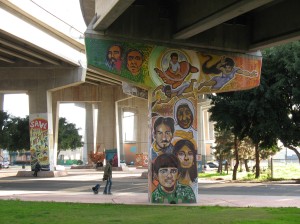
Above: Mi Raza Primero (1993), Mario Torero
Below: Coatlicue (1978), Susan Yamagata and Michael Schnorr — the first non-Chicano artists to create murals in the park


Above: Hasta La Bahia (1978), Victor Ochoa — reflects the protest call to extend the park All the Way to the Bay
Below: Los Grandes (1978), Rupert Garcia and Victor Ochoa — features Diego Rivera, Jose Clemente Orozco, and David Alfaro Siqueiros above Frida Kahlo

Below: Revolución Mexicana (1985), Victor Ochoa — airbrush recreation of sepia photos of revolutionary figures including Emiliano Zapata



The most recent chapter of activism in Chicano Park history occurred in the mid-1990s when plans to retrofit the bridge to make it earthquake safe threatened to destroy the murals. The community mobilized once again, resulting in a plan that protected the murals while the bridge work was conducted.

Above: No Retrofitting (1995), Mario Torero and Karmen Kalo
Below: We Saved the Murals (1997), Mario Torero, Victor Ochoa, and Armando Nuñez — celebrates what the community has accomplished
